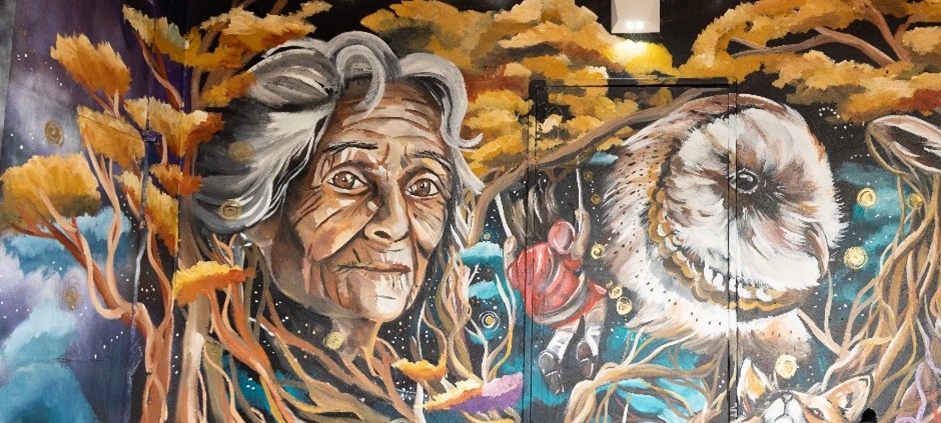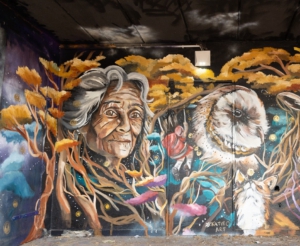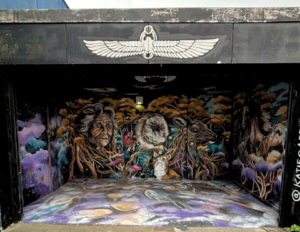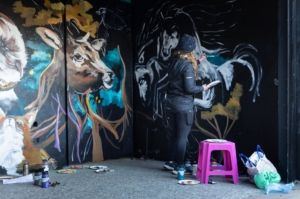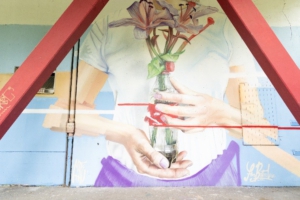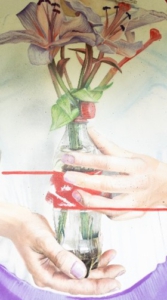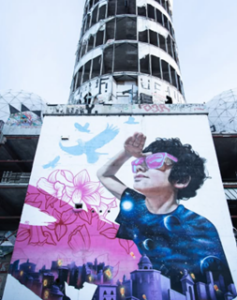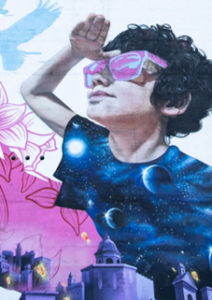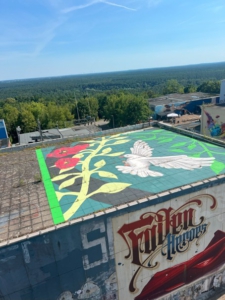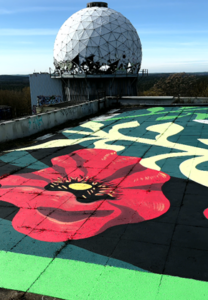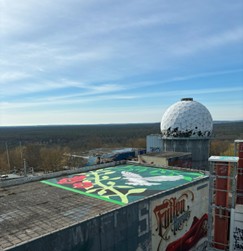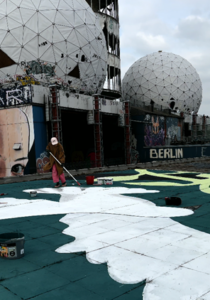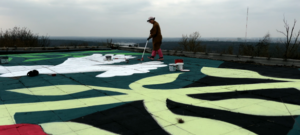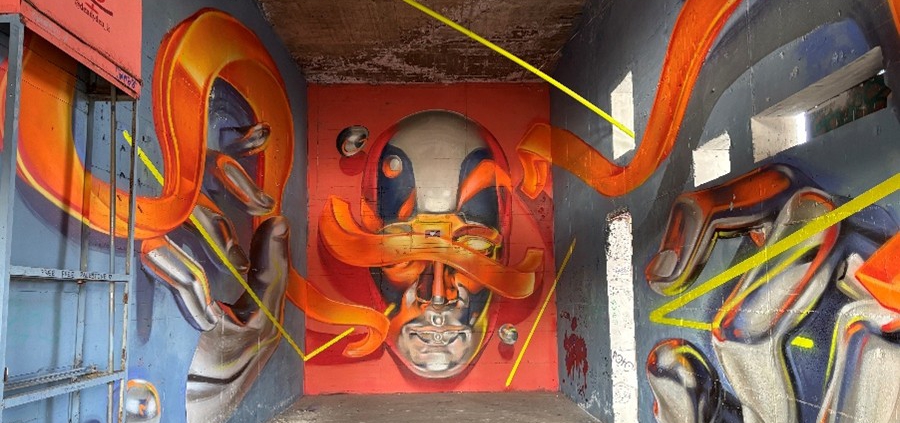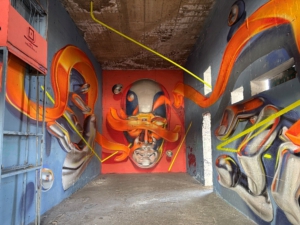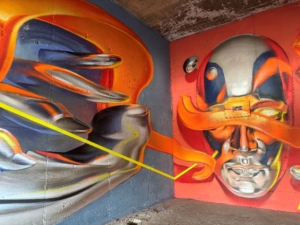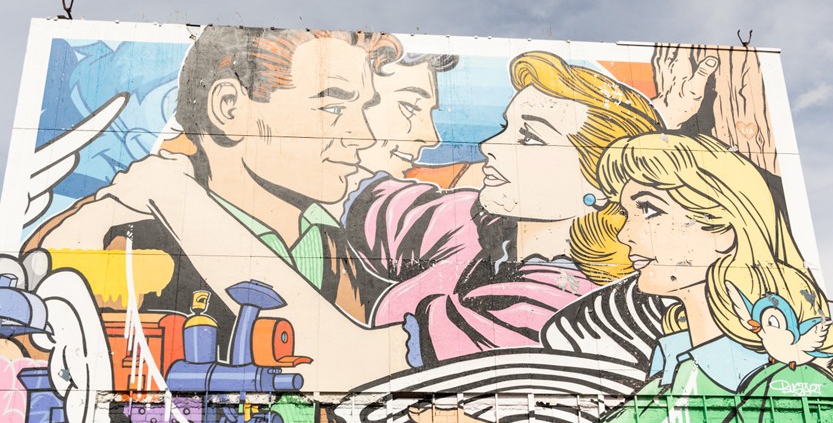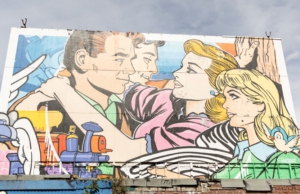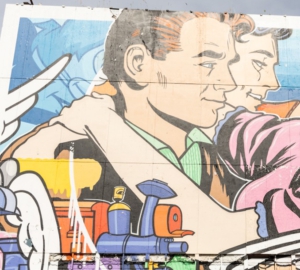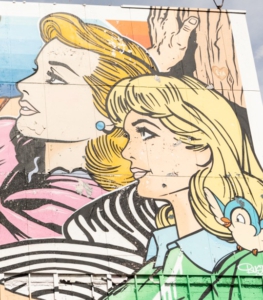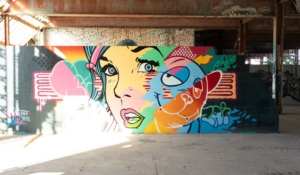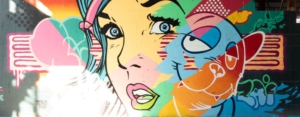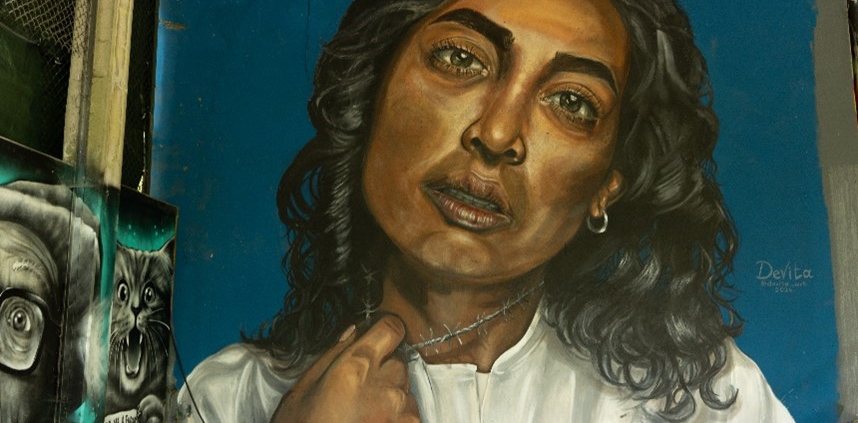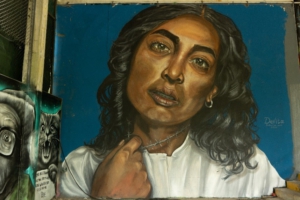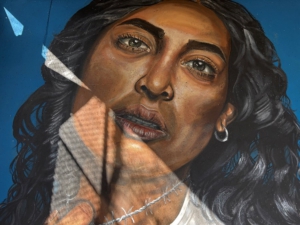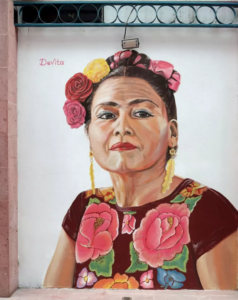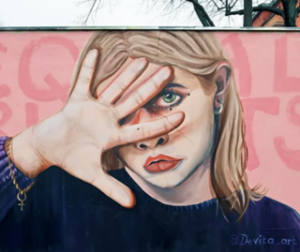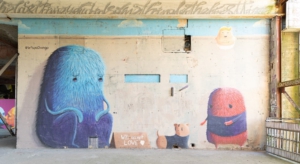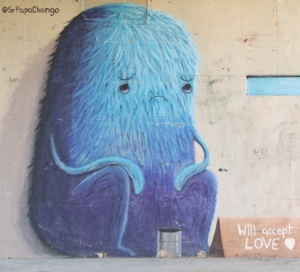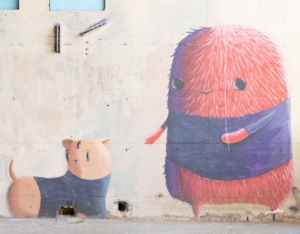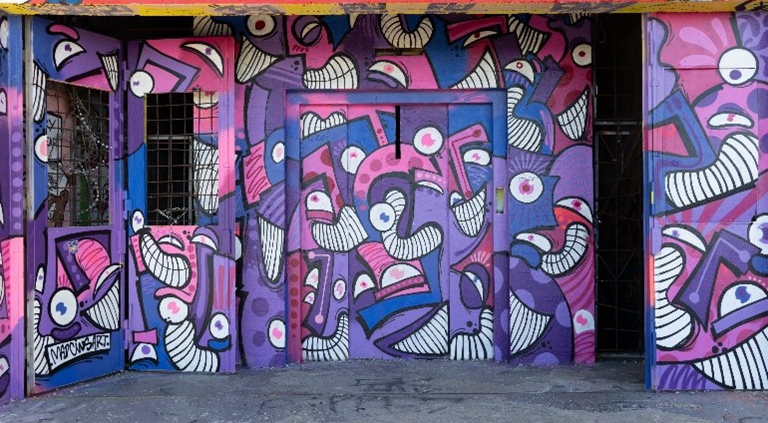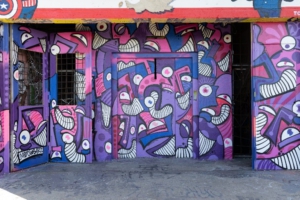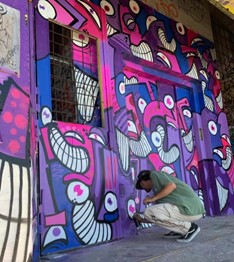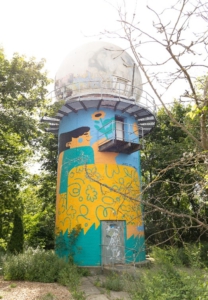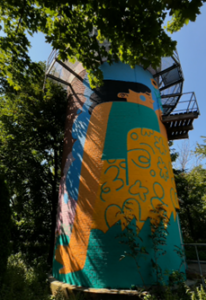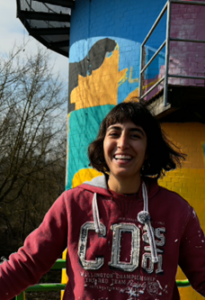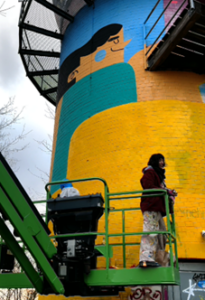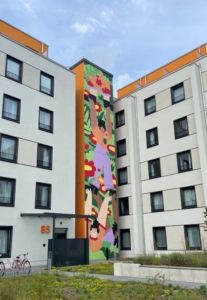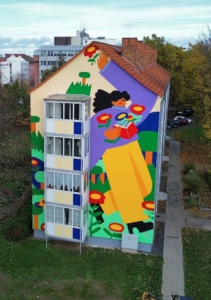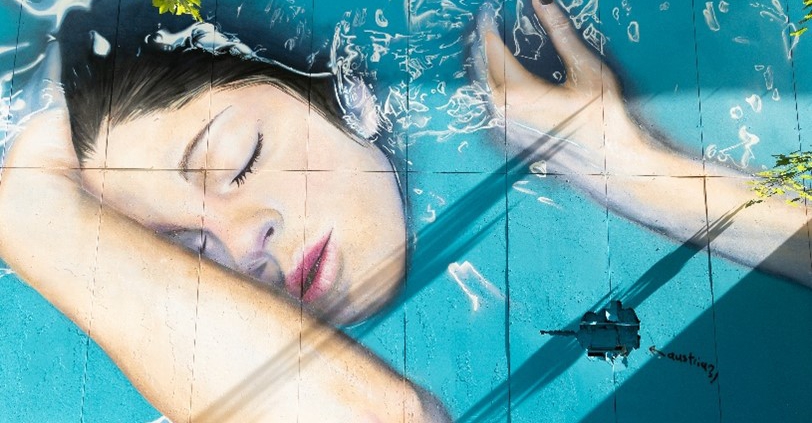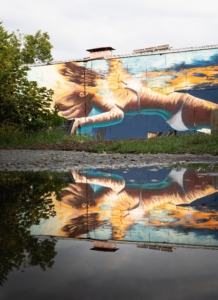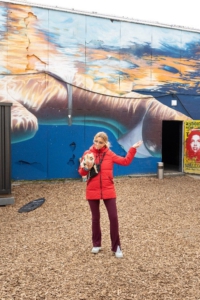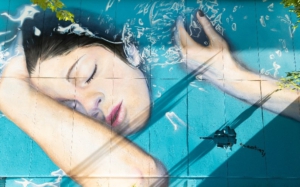Katie O – The Magic of Connection
As part of the Power of Female Art Festival 2024, the talented street artist Katie O created an impressive mural on Teufelsberg, taking visitors into a world of magic and connection. Her works are known for their striking scale and the profound stories they tell through her paintings.
Katie O, an artist who lives and works in the UK, regularly collaborates with community groups, schools, and local businesses to create large-scale artworks that reflect the environment and engage the people within it. Her goal is to make art accessible and show people how they can take pride in the art around them as part of their surroundings.
“I believe art is for everyone,” says Katie O. “It can be used to reflect the environment, society, and the things that are important to us. It is also a medium for telling the cultural history of an area.”
Her mural on Teufelsberg is a fascinating example of her philosophy. The artist wanted to create a “celebration of connection” with this work – a connection to oneself and to the world around us. The depiction of an older woman, surrounded by animals intertwined in tree structures, symbolizes the deep bond between humans and nature. The trees and animals are not just part of the landscape, but also part of the story of connection that Katie O seeks to tell.
“When we feel true connection to the world around us, the isolation and loneliness can melt away,” she explains. “When we feel understood or when we feel at peace in nature.”
In the depiction of the older woman with gray hair, gently and wisely gazing into the distance, the wisdom of years is reflected. Her inner calm and peaceful expression blend with the powerful and vibrant elements of nature around her – an owl, a deer, and a fox. These animals symbolize the various types of connections we can have with nature and ourselves. They convey the message that age can be one of the greatest powers when we are at peace with ourselves and let our inner child be free – playful, kind, and full of curiosity.
The mural is not only a visual masterpiece but also a call for reflection. It encourages viewers to think about their own connections – to themselves, to others, and to their surroundings. The combination of the soft, calming color palette with the powerful but tranquil depictions of animals and nature makes the mural a fascinating experience for every viewer.
Katie O is an artist who designs her works not only to appeal to the outer eye but also to engage the inner senses. Her works often have a magical element that transports the viewer to another world, evoking feelings of awe and wonder. She masterfully tells stories that move into the imagination of people and invites them to find a deeper connection to the world around us through her art.
